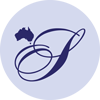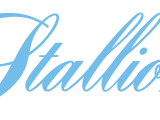Caption: Valais (GB) (Cicero-Lilly of the Valley by Martagon)
When Fred Moses, principal of the Kanangra agistment farm in the Scone district, and his horse-training wife Mary attended the annual sire parade at Coolmore, Jerrys Plains in late August, he was fully aware of the major association his family had into the early history of this property. What he may not have realised is that 2016 marked the 90th anniversary of the death at the age of 64 of one of the men responsible for that input, his grandfather Fred Moses’ brother and partner William Moses.
Representatives of a leading north western NSW pastoral family, the Moses brothers developed Arrowfield into one of Australia’s premier studs in the first quarter of last century through use of quality sire prospects and well bred mares. In fact, considering that it was rare at that time for a sire to have as many as 40 foals in a year, an analysis of their production achievement suggests they challenge as being among Australia’s most successful breeders.
Their most rewarding investment was the purchase in England in 1919, after he had stood a season there, of blue-blooded Windsor Stakes (15f) winner Valais (GB). Foaled in 1913, he was a chestnut son of the 1905 English Derby winner Cicero (Cyllene-Gas by Ayrshire) and Lily of the Valley (Martagon-Hamptonia by Hampton). Unfortunately, the Moses brothers did not enjoy the full glory of Valais’ success as a sire. On the eve of attaining what was to be the first of his five successive Champion Australian Sire titles, that of 1923-24, they dispersed the Arrowfield Stud, possibly because of the poor health of William Moses.
Held in April 1924, the sale saw new Australian records secured for a sire, Valais (14,400 guineas; $28,944), and broodmare, the Moses importation Chersonese (GB) (5100 guineas; $10,710), a daughter of the modest Cyllene racehorse and sire Cylgad and distinguished performer and matriarch Chelandry. The 135 lot catalogue also included the proven sires Poitrel (1914, (St Alwyne (GB)-Poinard by Metal (GB)) for 1850 guineas; $3885 and his 25 year-old sire St Alwyne (GB) (1899, St Frusquin-Florence by Cambello), who made 200 guineas; $420.
Bred and raced by the Moses brothers after he failed to reach his 300 guineas ($630) reserve at the Sydney yearling sales, Poitrel won 17 races (two of them dead-heats) in 37 starts including the Melbourne Cup (1920). His career included wins over champions Desert Gold, Gloaming, Beauford and Eurythmic. Poitrel was one of two Melbourne Cup winners sired by St Alwyne, the other being the C. L. Macdonald, Victoria bred gelding Night Watch (1918). Runner-up in the 1917 Caulfield Cup, Night Watch was out of another immortal of the turf in Wakeful.
Four offspring of St Alwyne bred at Arrowfield by the Moses brothers contested the 28-runner 1914 Melbourne Cup, namely Sir Alwynton (a neck second; race record time), St Carwyne (fourth, won AJC Metropolitan), Gladwyn (10th, won Moonee Valley Cup twice) and Allingamite (13th). Using St Alwyne, they also bred Lady Medallist (won VATC Caulfield Stakes, Eclipse Stakes, VRC October Stakes, AJC Craven Plate, Taranaki Cup, twice, Wanganui Guineas), her brother Moorilla (won 1911 Sydney Cup) and brother and sister Sir Alwyne (won Western Australian Derby) and Alwina, the mother of Peter Pan, the Hall of Famer who won two Melbourne Cups.
A son of the imported Tracery sire Pantheon (GB), a winner of the Randwick Plate (3200m) twice and third in the Melbourne Cup and Cox Plate, Peter Pan was bred and raced by Rodney Rouse Dangar (1872-1952). He was a scion of one of the most distinguished Hunter Valley pioneering families. Based in the Singleton district, they played a big role in the development of the thoroughbred in the region.
Peter Pan provided revenge
PETER Pan’s success was somewhat of a revenge for Rodney Dangar for the sale to the Moses brothers by his father, Richard Halifax Dangar, of the broodmare Jacinth at a stud dispersal in 1904. A daughter of 1983 Melbourne Cup winner Martini-Henry, like Carbine a son of Musket, she had a colt foal at foot by the Dangar’s St Simon sire Positano (GB).
Reared on Arrowfield and sold at Sydney sales for 500 guineas ($1050), a high price, and raced under the name of Poseidon, he emerged from a modest juvenile season to win at three the AJC Derby, Caulfield Cup, Victoria Derby, Melbourne Cup and AJC and VRC St Legers. At four he won the Caulfield Cup again and finished eighth under 10:3 (65kg) in the Melbourne Cup.
Winner of 19 of 33 outings, Poseidon has a niche in the Australian Thoroughbred Hall of Fame. Also in this exalted company is the Moses-bred Valais stallion Heroic (1921), a winner of 21 of 52 outings, ranging from 1000m to 3200m and including in Gr.1 equivalent events the AJC Champagne Stakes (1200m), Derby, MVRC Cox Plate, William Reid Stakes, VRC Newmarket, VATC Caulfield Guineas, Memsie Stakes (twice), WRC Underwood Stakes, Caulfield Stakes and C.F. Orr Stakes.
He probably would have started favourite at three in the 1924 Victoria Derby and Melbourne Cup if his nomination for both had not been rejected because of the disqualification of connections over the running of Purser, an eight year-old gelding by Sea Prince (GB) (Persimmon) in the Coongy Handicap at Caulfield three days prior to a 2.5 length win in the Caulfield Cup. Purser retained the Cup, but went for a 12-month spell along with connections.
One of these, J.R. Corteen, was the sole owner of Heroic, but the Valais colt was able to return to racing in the autumn after he was purchased privately by Sydney sportsman C.B. Kellow, reputedly for 16,000 guineas ($33,600), after failing to reach a reserve of 20,000 guineas ($42,000) at an auction sale. When Heroic retired from racing, he went to stud at Tarwyn Park in the Bylong Valley. This stud was owned owned by Herbert Thompson, the principal also of the Oakleigh Stud in the Widden Valley and a member of the family that still conducts the Widden Stud.
Heroic in the1930s ruled as the Champion Australian Sire for what was then a record seven successive years. His progeny included a giant of Australian racing in Widden Stud-produced Ajax (36 wins, 18 in succession, about 20 Gr.1 class events) and Hall Mark (AJC Derby, VRC Derby, Melbourne Cup, the Doncaster, Underwood Stakes), Silver Standard (in 1936 second Caulfield and Melbourne Cups), Nuffield (won AJC and VRC Derbys, Caulfield Guineas), Hua (won AJC Champagne Stakes, VRC Sires’ Produce Stakes, Derby, beat Ajax, MVRC William Reid Stakes), Gallantic (AJC and VRC Oaks), Cereza (AJC Oaks), Leila Vale (AJC Oaks) and Heros (the VATC Futurity, MVRC William Reid, twice), to mention a few.
Heroic’s record of being the leading sire for seven years stood for more than 60 years, falling to shuttler Danehill (USA) (Danzig) this century. On the same farm at Jerrys Plains, but one under different ownership, that hosted Valais and produced Heroic, Danehill was the Champion Sire nine times in the period 1995-2005. Interestingly, Danehill and Heroic were the two of the closest inbred leading sires in Australian history. Danehill has a 3mx3f of Northern Dancer’s dam Natalma and a 5fx5m of Hyperion, but Heroic had far less ancestors. He doubled up Cyllene 3mx3m, Chelandry’s dam Illuminata 4fx3f, Hampton 5m,4fx4f and Bend Or four times, 5m,4mx5m,5m.
Valais also had a strong inbred pedigree, duplicating Bend Or 4mx3m, broodmare Feronia 5fx3f, her sire Thormanby 6f,5fx4f, the sire Macaroni 5fx4f, Stockwell 6m,6f,6mx5m,5f and Hampton 4mx3f. During his sire career in the care of the Moses brothers at the Jerrys Plains Arrowfield, Valais was so successful he was labelled “The Freak Sire”. Besides supplying Hall of Famer Heroic, two other home breds among his offspring, both 1922 foals, who appear worthy of this honour are the brilliant but unpredictable stallion Manfred and the very fast filly Valicare.
Left at the post in some of his races, including two events at Flemington in the one afternoon, Manfred won 11 races from 1000m -2400m, including the AJC Derby, VRC Derby and the Cox Plate at three, a year he was a close second in the Melbourne Cup. He won the Caulfield Cup at four and went on to be a good sire in South Australia, including among his progeny The Trump (in 1937 won the Caulfield Cup and Melbourne Cup) and Mildura (won the AJC Doncaster, twice, VRC Newmarket).
The filly Valicare was unbeaten in seven starts at three and included among her career successes the AJC Oaks (then known as the Adrian Knox; won by five lengths), AJC Doncaster, STC Rawson Stakes (eight lengths), AJC All-Aged Stakes and the Carrington Stakes (all placegetters by Valais). She finished fifth under 9:13lb (63kg) in the 1927 edition VRC Newmarket won by Gothic, an imported son of Pantheon’s sire Tracery who also won this race again in 1928. Those behind Valicare in 1927 included Heroic (Valais) and Fujisan (Valais), an Arrowfield-bred gelding who won the Doncaster, All-Aged Stakes, Brisbane Cup, Adelaide Cup and Port Adelaide Cup.
The foals sired by Valais at Arrowfield paved the way for him to claim the Champion Australian Sire title in five successive seasons, 1923-24 to 1927-28. His most rewarding year was 1925-26 when his progeny earnings were the equivalent $114,736, the biggest total recorded in Australia to that time.

Record prices in the sale ring
THE 1926 sales also echoed his exceptional success. In Sydney the five highest priced yearlings were by Valais, selling at 5500 guineas ($11,550) for a brother to Valicare, a new Australian record, previous best 3050 guineas, 4100 guineas ($8610) for a brother to Vaals, AJC Epsom winner bred at Arrowfield, 3800 guineas ($7980) for the half-brother to Poitrel-sired AJC, VRC, SAJC St Leger winner Belgamba, 3000 guineas ($6300) for a half-sister to Gr.1 winners King Carnival, Baringhup and 2400 guineas ($5040) for another filly. The top price in Melbourne was 2750 guineas ($4775) for a brother to Manfred.
Each of these yearlings was from a mare purchased in foal to Valais at the Arrowfield dispersal, the one at which Heroic’s dam Chersonese sold for the record broodmare price of 5100 guineas ($10,710). Purchased by Victorian thoroughbred industry leader A.T. Creswick, she produced two stakes winners for him by Devizes (GB), the best of them being Cimbrian, a winner in Melbourne of the Hotham Handicap, Caulfield Stakes, Bagot Handicap and Williamstown Cup.
A winner in England of the Doncaster Cup (3600m), Devizes was by Valens (by the Bend Or sire Laveno), an English St Leger second whose best representative was Violoncello (GB), the winner in 1921 of the Caulfield Cup and in 1922 of the first running of the Cox Plate. He was owned by Sydney merchant Sir Samuel Horden and supplied some good winners from use at his Pentwynvale Stud at Wingen near Scone, including Viol d’Amour, the runner-up in the 1932 Cox Plate.
The centrepiece of the Moses dispersal of Arrowfield was, of course, the offering of Valais. There were concerns that he might be bought for overseas, but at the fall of the hammer the new owners were H.S., A.W. and A.E. Thompson, Widden Valley.
Alternating between Tarwyn Park and the Widden Stud on a record fee of 500 guineas ($1050), he was a devastating loss when he died in 1927 at only 14 years of age. Good horses from this use included Monash Valley (won Queensland Derby), St Valorey (won Brisbane Cup, twice) and Rhonite (won the QTC Sires’ Produce Stakes).
In addition to Poitrel, St Alwyne and Valais, sires used by the Moses brothers at Arrowfield included the imports Cardinal Beaufort (GB) (1907), a high class stayer by John O’Gaunt, sire also of the influential Swynford, and Roseworthy (GB) (1910), a son of the St Simon Ascot Gold Cup winner William The Third.
One of the better two and three year-olds of his generation, Roseworthy included among his Moses-bred progeny Longworthy (won VRC Bagot Handicap) and Tanadees (won the Auckland Cup). The latter was an 11-years younger half-brother of Radnor (1910, by Earlston (GB)), a Moses bred winner of the AJC Sires’ Produce Stakes and St Leger, VRC St Leger, Champion Stakes and WATC Derby and second AJC Derby. The sire Red Cardinal only enjoyed modest success, but a son, Red Cardinal, won the Newcastle Cup and finished eighth in Poitrel’s Melbourne Cup and three others were Cane King (won QTC Ascot Handicap), Maltlean (Kalgoorlie Cup) and Pleione (Werribee Cup).

(Valais (GB)-Chersonese (GB) by Cylgad)
Now one of biggest studs
BEFORE the quarter century golden era at Arrowfield under the Moses, the property had produced quality bloodstock for the Bowmans, owners of a pastoral empire in the Hunter Valley from the early 1800s. It was very quiet on the breeding front, however, after the Moses’ 1924 dispersal until it was reborn in 1990 under the inspirational skills of John Messara, a Sydney stockbroker with a profound love of breeding and racing.
In association with the then emerging world thoroughbred operation Coolmore, whose headquarters are in Ireland, Messara sparked a world breeding revolution by shuttling the Danzig champion three year-old sprinter and classic miler Danehill out to Arrowfield. Five years later the property and the Australian standing rights for Danehill were acquired by Coolmore and Messara, retaining the Arrowfield masthead, established a new Arrowfield in the Segenhoe Valley near Scone.
This property and Coolmore at Jerrys Plains are now two of Australia’s greatest studs and each has been home for champion Australian sires and training grounds for modern day horsemen. One of the latter who received some of his education with Coolmore in both hemispheres is Henry Field, head of Newgate Farm, Aberdeen, an entity which in six years has become a new colossus in Australian breeding. Newgate Farm and the Messara Arrowfield each had yearlings gross more than $10m at this year’s Magic Millions Gold Coast yearling sale.
Henry Field’slink to Moses family
IF THEY had been around to see it, Newgate’s success would have been very pleasing for the Moses Brothers who were such fine thoroughbred breeders at Arrowfield all those years ago. Henry Field maternally is a great-great grandson of Fred Moses. It goes back through Henry’s mother being a daughter of Reg ‘Tiggy’ Moses, a now-deceased fine horseman who carried the same name his father, one of the half dozen sons of Fred Moses. The Fred Moses of the Kanangra agistment farm, one which raised the current good galloper Under the Louvre, is a grandson who is the only one at this time carrying the Moses name active in commercial breeding.
The biggest player in breeding and racing in the Moses family since the Arrowfield era was Fred’s son Reg, a great-grandfather of Henry Field. In the 1960s and 1970s, Reg Moses bred a long string of good horses on Fairways, a farm close to Muswellbrook in the Hunter Valley. He was a great mate of Stanley Wootton and shared ownership with him and Baramul Stud, Widden Valley proprietor Alfred Ellison of five times Champion Australian Sire Star Kingdom (IRE) (by the Hyperion sire Stardust). Fairways Reg Moses had a lot of success with a broodmare named Alcestis, a three-quarter sister by Manitoba (GB) to the dam of 1958 Melbourne Cup winner Baystone, a son of the Dante sire Brimstone (GB). The second dam of Alcestis, the Sea Prince mare Miss England, is a Moses of Arrowfield-bred half-sister to Heroic.
Published March 2017



